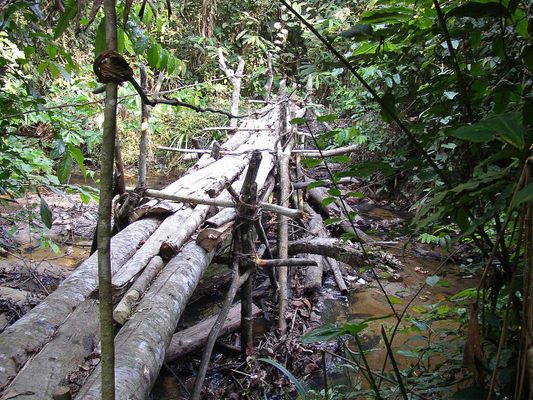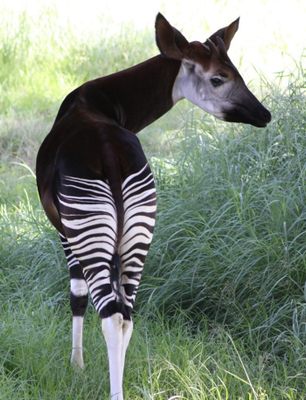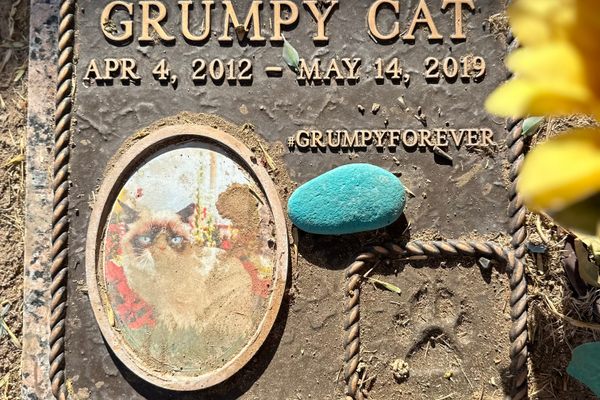About
Located in the Congo River basin, the Okapi Wildlife Reserve is a refuge for nomadic pygmy Mbuti and Efe hunters and many species of animals and birds. It’s also home to about 5,000 of the estimated 30,000 okapi surviving in the wild.
The Okapi Wildlife Reserve was established in 1992 and listed as a World Heritage Site in 1996. Covering about 5,300 square miles of the Ituri forest in the north-east of the Democratic Republic of the Congo, the reserve helps to protect rare plant and animal life, as well as the traditional lifestyle and culture of nomadic pygmy hunter-gatherers.
The reserve takes its name from the okapi that live in its forests. These strange creatures are notable for the zebra-like markings on their legs, but are most closely related to giraffes, hence their other common names: forest giraffe, Congolese giraffe or zebra giraffe. Some 30,000 okapis survive in the wild today, of which about 5,000 live in the reserve.
In total, the reserve is home to 101 mammal species and 376 documented species of birds. These include 17 species of primates (with a population of around 7,500 chimpanzees), an estimated 7,500 forest elephants, and populations of dwarf antelopes, water chevrotains, forest buffalo, bongos (nocturnal forest antelopes) and giant forest hogs.
Along with the rangers who protect the park, the other guardians of these forests are the Mbuti and Efe hunters who roam the reserve. Both are pygmy peoples, with adult males typically reaching a height of at most 4 feet and 11 inches. They have lived in these forests for centuries, perhaps millennia, and continue to live as hunter-gatherers deep in the forest, maintaining their traditional lifestyles in harmony with their environment.
Other humans, however, are far less respectful of the reserve and its many natural resources. The Okapi Wildlife Reserve faces numerous threats, including the commercial hunting of bushmeat, slash-and-burn forest clearance for agriculture, and illegal mining and logging, all exacerbated as immigrants continue to move into the Ituri forest from the overpopulated highlands to the east.
As if that wasn’t problematic enough, armed militias are also a threat to the reserve, its rangers, and all that live within it. Like Virunga National Park in the DRC, Okapi has suffered attacks by Mai-Mai rebels. In June 2012, a group formed of elephant poachers and illegal miners attacked the Epulu Conservation and Research Center, killing six people and 13 of the 14 okapis that lived at the center. In July 2017, a large group of journalists and park rangers were attacked by a group also thought to have been Mai Mai rebels. The foreign journalists escaped with several rangers, but four local wardens and a tracker were killed.
As with Virunga National Park, the situation remains tense and efforts are ongoing to maintain the relative stability of the reserve in the face of these man-made threats.
Related Tags
Know Before You Go
The Okapi Wildlife Reserve is located in the north-east of the Democratic Republic of the Congo, not far from the borders with South Sudan and Uganda. The nearest city to the reserve is Isiro, but tourists can arrange tours leaving from Beni or Kisangani, both of which require at least a full day journey, and longer in the wet season. But before you even consider a visit to the Okapi Wildlife Reserve, contact the Okapi Conservation Project for an update on the current security situation.
On December 4, 2018, the Okapi Conservation Project told Atlas Obscura the following: “Technically, the Reserve is open for tourists, but we strongly encourage people not to travel to the area, especially with the pending presidential election on December 23. Security is unpredictable and they just closed the nearest airport in Bunia after stating security issues. After the election, we do not know what the situation will be. There is no fee to enter the Reserve for tourists at this time, but they would need to contact us to arrange a stay for a nominal fee, as we have the only place to stay in the town of Epulu, the Headquarters of the Reserve. Pending the results of the election, safety, and security, we hope to bring tourism back to the Reserve in the next few years.”
Community Contributors
Added By
Published
December 6, 2018
Sources
- https://whc.unesco.org/en/list/718
- https://www.okapiconservation.org/the-reserve/
- https://www.worldheritageoutlook.iucn.org/explore-sites/wdpaid/124389
- https://www.theguardian.com/environment/2017/jul/17/five-park-rangers-killed-in-drc-in-tragic-weekend-for-wildlife-defenders
- https://blogs.scientificamerican.com/extinction-countdown/okapi-conservation-militia-killed-people-animals/

























